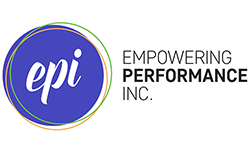It’s Time to Eat the Frog
Let me guess, you’ve got 17 tasks on your to-do list with varying degrees of needed dedication and timing. Several of these tasks must be completed within the next hour, day, or week, and more within the month. Some should be easy tasks to check off and others will haunt you as you work on other things. You know you should tackle the pressing items first, but when it comes right down to it… right this minute… you procrastinate.
Now it’s time to eat the frog. Wait… eat the whaaaat?!
“If it’s your job to eat a frog, it’s best to do it first thing in the morning. And if it’s your job to eat two frogs, it’s best to eat the biggest one first.” – {Usually attributed to} Mark Twain
The “frog,” especially the biggest one, is not only the task you’re likely avoiding, but it’s potentially the task that could have the greatest impact on your day, your current project, or your life.
But how do you spot the big frog?
Deep down, you probably know exactly which items on your to-do list are the frogs. But here are some tips on dividing your list into four categories in an effort to identify the biggest frog:
Category 1: Tasks you want to do, and really need to do.
Category 2: Tasks you don’t want to do, and really don’t need to do.
Category 3: Tasks you want to do, and really don’t need to do.
Category 4: Tasks you don’t want to do, and really need to do.
Category 4 will lead you straight to the big honkin' frog. This item most likely doesn’t motivate you. Therefore, you procrastinate.
All too often we blame time. And time is a funny paradox.
We never seem to have enough time. Yet, we all have exactly the same amount of time.
The problem isn't a shortage of time, but rather how we choose to use the time available to us, minimizing distractions. And distractions are a plenty.
The Neuroleadership Institute's co-founder, David Rock, studied thousands of people and discovered that on average we are truly focused only 6 hours a week. Additionally, it takes an average of about 23 minutes to resume our interrupted focus.
At EPI, we create custom learning and training programs for our clients to improve their efficiency, better their relationship with time, and help them focus more effectively. Here are some steps you can take today to minimize distractions and increase your effectiveness:
Limit Your Frogs.
Making too many commitments can decrease your productivity. Certainly, it can wear you out! Simply ask yourself these three questions before committing:
Does it align with my most important goals and priorities, as well as my values?
Will I be able to give it my best without burning out or disappointing the important people in my life?
And, if I say yes, what other things—possibly important things—will I need to limit?
Plan.
To increase productivity, develop a “Work Plan” and then a “Time Plan” to serve as road maps for your daily task list. Ask yourself the following questions:
Work Plan:
Do I know the results I want?
What must I do to get those results?
Am I clear on my priorities?
Time Plan:
What's the time commitment?
How will I accomplish each activity?
How much flexibility should I build in for the unexpected?
Focus Your Time Effectively.
Identify your periods of highest mental and physical energy each day, and structure your most important and demanding tasks around these times. Science says your brain is wired to take in new information when it's in acquisition mode, typically between 10 AM and 2 PM, and again from 4 PM to around 10 PM
Focus is like a muscle. And using it makes it stronger. But once you understand how you're spending your time, you can allocate your focus more deliberately to become more productive. Focus allows you to get the necessary things done at the best times so you can be innovative and creative.
Clear out your clutter: physical, mental, and digital. It's hard to concentrate when everything around you (or inside your head) feels messy.
Manage Your Distractions.
Keep an interruption log to identify your biggest distractions.
Note how much time a distraction costs you, so you have more of an incentive to avoid it in the future.
If you have drop-in visitors, discourage them or keep the conversation shorter by standing up to talk.
Handle each email only once and refresh yourself on the 4 Ds of Email Decision-Making:
Delete It
Do It (if it takes less than two minutes)
Delegate It
Defer It
So, now you can add “improve time management” to your to-do list. Moreover, you can cross it off. C’mon… you know you want the satisfaction. Get eating those frogs!

